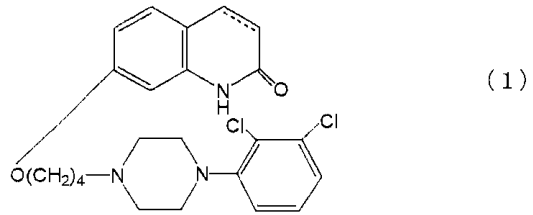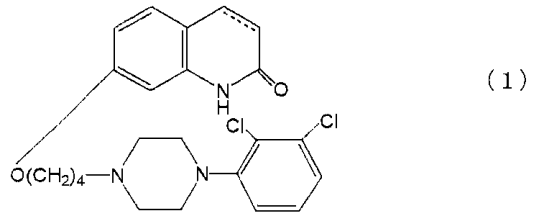IP High Court Case Summary 2020 (Gyo-ke) 10080 and 10081
Intellectual Property High Court (IPHC) issues opinion on how to recognize common technical knowledge regarding medicinal use.
1. Background
JP Patent No. 4178032 (‘032 patent) was granted to company X on August 29, 2008. The patent is directed to an invention entitled “5-HT1A receptor subtype agonist”. A trial for correction No. 2018-390120 (‘120 correction trial) was filed on August 21, 2018 to delete claims 3 and 6 (1st correction). The Japan Patent Office (the JPO) granted the 1st correction on November 14, 2018.
Company Y filed a trial for invalidation No. 2018-800130 (‘130 invalidation trial) against the ‘032 patent. In response, company X corrected claim 2 (2nd correction).
On May 12, 2020, the board of appeal granted the 2nd correction and ruled that claims 1, 4, and 5 are invalid while claim 2 is valid.
Then, the companies X and Y filed respective lawsuits (2020 Gyo-ke 10080 “Case 1”, 2020 Gyo-ke 10081 “Case 2”) before the Intellectual Property High Court (the IPHC), in which company X requested a revocation of the decision in terms of claims 1, 4 (Case 1) and 5 and company Y requested a revocation of the decision in terms of claim 2 (Case 2).
2. Patented Inventions at issue
Corrected claims 1, 2, 4 and 5 read as follows:
<Claim 1>
Pharmaceutical composition for treating disorders of the central nervous system associated with 5-HT1A receptor subtype, selected from the group of bipolar I disorder with onset of depressive disorder, mild mania in recent episodes, mania, mixed clinical posture, melancholy or unspecified symptoms, and bipolar II disorder with onset and circular recurrent major depressive symptoms with onset of mild mania in episodes, the pharmaceutical composition comprising a therapeutically effective amount of a carbostyril compound of formula (1):

wherein the carbon-carbon bond between 3-position and 4-position in the carbostyril skeleton is a single or a double bond; and a pharmaceutically acceptable salt or solvate thereof.
<Claim 2>
Pharmaceutical composition for treating depressive disorder in disorders of the central nervous system associated with 5-HT1A receptor subtype, the pharmaceutical composition comprising a therapeutically effective amount of a carbostyril compound of formula (1):

wherein the carbon-carbon bond between 3-position and 4-position in the carbostyril skeleton is a single or a double bond; and a pharmaceutically acceptable salt or solvate thereof.
<Claim 4>
The pharmaceutical composition of claim 1, wherein the disorder is bipolar I disorder with onset of mild mania in recent episodes, mania, mixed clinical posture, melancholy or unspecified symptoms.
<Claim 5>
The pharmaceutical composition of claim 1, wherein the disorder is bipolar II disorder with onset and circular recurrent major depressive symptoms with onset of mild mania in episodes.
3. Decision of JPO’s Board of Appeal
The board of appeal ruled as follows:
“Considering the descriptions of several publications, other than the specification of this application, it is common knowledge that ‘5-HT1A partial agonists can be used for the treatment of depressive disorder.’ Then, those skilled in the art would have recognized that, from the pharmacological test (in vitro test) described in the specification while taking the common technical knowledge into account, depression can be treated based on the 5-HT1A partial activating action in the carbostyril compound.
However, it was not common knowledge that “5-HT1A partial agonists can be used for the treatment of bipolar disorder”, and those skilled in the art could not have recognized that the carbostyril compound can treat a patient suffering from either bipolar I disorder or bipolar II disorder in claim 1 even in light of the pharmacological test (in vitro test) described in the specification in consideration of common technical knowledge.
Therefore, the detailed description is not clearly or fully described to the extent that those skilled in the art could make and use the invention of claim 1. The same applies to claims 4 and 5. In conclusion, the application fails to comply with the enablement requirement.
In addition, the invention of claim 1 is not fully supported by the detailed description. The same applies to claims 4 and 5. In conclusion, the application fails to comply with the support requirement.”
4. Decision by the IPHC
4-1. Decision regarding common technical knowledge
(1) Common technical knowledge concerning the antidepressant effect
The IPHC decided that, at the time of filing the application, it was common technical knowledge that 5-HT1A receptor partial agonists have an antidepressant effect based on the 5-HT1A receptor partial agonist effect activated through the combination with a postsynaptic 5-HT1A receptor in the brain and therefore are in general effective for the treatment of depressive disorders by their antidepressant effect based on the 5-HT1A receptor partial agonist effect.
(2) Common technical knowledge concerning the effect for the treatment of depressive episodes of bipolar disorders
Based on the facts described above and an assumption that it was common technical knowledge at the time of the filing of the application that 5-HT1A receptor partial agonists have an antidepressant effect based on the 5-HT1A receptor partial agonist effect through the combination with a postsynaptic 5-HT1A receptor in the brain, the IPHC finds that it was common technical knowledge at the time of the filing the application that 5-HT1A receptor partial agonists in general are effective for the treatment of depressive episodes of bipolar disorders based on their antidepressant effect.
4-2. Common technical knowledge concerning medicinal uses
(1) Decision by the JPO’s Board of Appeal
“At the time of filing of the application, it is common technical knowledge that various antidepressants can be used for the treatment of ‘depressive episodes’ of bipolar disorder. On the other hand, when an antidepressant drug is used in patients with bipolar disorder, considering the risk of various adverse events such as triggering manic episodes, triggering hypomanic episodes, triggering rapid cycling, and aggravating mixed depression, it is difficult to say that there is common technical knowledge that all antidepressant drugs can be used to treat ‘depressive episodes’ of bipolar disorder, and it is difficult to say that there is common technical knowledge that 5-HT1A receptor partial agonists can be used for the treatment of ‘depressive episodes’ of bipolar disorder. For these reasons, the board of appeal decided that it is not considered to be common technical knowledge at the time of filing of the application that 5-HT1A receptor partial agonists can be used for the treatment of bipolar disorder.”
(2) Decision of the IPHC
“In the development of pharmaceutical products, target molecules (receptors, etc.) for the treatment of target diseases are searched as basic research, and pharmacological tests (in vitro tests, animal tests) are conducted to search for pharmacological effects on the target molecules (receptors, etc.) and compounds having the pharmacological effects. As a result of such pharmacological tests, at the stage where a reasonable expectation is obtained that the pharmacological action of the compound has a therapeutic effect on a disease (“efficacy of the medicine”), a patent application for a medicinal use is generally filed.
On the other hand, the Pharmaceutical and Medical Device Act stipulates that a person who will manufacture and sell pharmaceutical products must have an approval for the manufacture and sale of each product from the Minister of Health, Labor and Welfare (Article 14, paragraph 1), and in the examination for approval, the “effects of the drug” are examined by comprehensively considering the efficacy and safety (existence and degree of side effects and adverse events, etc.) of the compound in the application.
In view of the above-mentioned situations, in order to be able to “work” an invention of medicinal use, unless there are special reasons, such as that the administration should be avoided due to the risk of significant side effects or adverse events, it is sufficient for a person skilled in the art to understand that the drug has a therapeutic effect on the subject disease, based on the detailed description of the invention in the specification and common technical knowledge at the time of filing of the application.”
(3) Application to this case
As to “the risk of various adverse events when the antidepressant is used in patients with bipolar disorder, such as causing manic episodes, causing hypomanic episodes, causing rapid cycling, and aggravating mixed depression” as stated in the JPO decision, at the time of filing of the application, it was considered that the risk of manic episodes was controlled by the combination of an antidepressant with a mood stabilizing drug, and it was possible to deal with the occurrence of manic episodes by discontinuing or decreasing the antidepressant. Therefore, there is no special reason above.
Then, as stated above, it was common technical knowledge that 5-HT1A receptor partial agonists in general had a therapeutic effect on depressive episodes of bipolar disorder due to their antidepressant effect.
Therefore, in Case 1, the requests by company X were approved, and the JPO decisions on claims 1, 4 and 5 were reversed. In Case 2, the requests by company Y were dismissed because there is no reason for revocation of claim 2.
5. Comments
(1) Common technical knowledge regarding medicinal uses
The decisions provide a guideline for the concept of common technical knowledge regarding medicinal uses. Unless there is a “special reason such as that administration should be avoided because there is a risk of significant side effects or adverse events”, the common technical knowledge regarding medicinal uses can be considered, and the enablement requirements and the support requirements can be examined.
The judgments will be helpful when examining the extent to which medicinal use can be described in a claim of a pharmaceutical invention. In the future, it will be important to accurately understand the common technical knowledge regarding medicinal uses and consider “special reasons”.
In order to further clarify the above-mentioned “special reason”, it is necessary to accumulate judicial precedents, and it is important to watch future trends of the judicial precedents.
(2) Patent linkage
In these cases, in response to the JPO decision, in July 2020, the Ministry of Health, Labor and Welfare lifted the patent linkage for “manic symptoms in bipolar disorder” among the efficacies and effects of the approved drug (Abilify®), and generic drugs were additionally approved for the efficacy of “manic symptoms in bipolar disorder”. As a result, generic manufacturers have started to sell the generic drugs with an additional efficacy of “manic symptoms in bipolar disorder”.
However, due to this judgment of the IPHC, the patent has become valid for “manic symptoms in bipolar disorder”, and the patent linkage should be considered again. If a generic drug included in the technical scope of the patented invention is approved before the decision of JPO’s Board of Appeal (trial for invalidation of patents) is finalized, the supply of the generic drug may become unstable when the JPO’s decision is subsequently revoked. It is important to watch future trends in pharmaceutical approval.
6. Reference information (related judgment)
On the same day, similar decisions were made in 2020 (Gyo-ke) No. 10077, 2020 (Gyo-ke) No. 10078/10082, and 2020 (Gyo-ke) No. 10079/10083.
<References>
2020 (Gyo-ke) No. 10077
2020 (Gyo-ke) No. 10078/10082
2020 (Gyo-ke) No. 10079/10083
2020 (Gyo-ke) No. 10080/10081 (this judgment)
https://www.ip.courts.go.jp/app/files/hanrei_jp/857/090857_hanrei.pdf